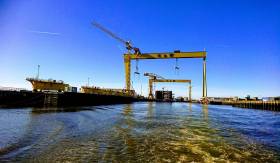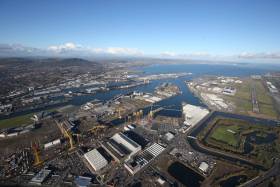Displaying items by tag: New Owners
Harland & Wolff's new owner is to take possession of the historic Belfast shipyard today as it pays £3.3m to the administrators of the business.
According to the Belfast Telegraph, Infrastrata plc plans to use the shipyard which built the Titanic for fabrication work in its underground natural gas storage project in Islandmagee near Larne.
Infrastrata chief executive John Wood has said that buying Harland & Wolff would save it £45m of a proposed spend of £303m on the Islandmagee project.
But it is also hoping to secure other shipbuilding projects in the future. At its peak, Harland & Wolff employed 35,000 people, and built 140 ships during the Second World War.
Infrastrata has already paid a deposit of £500,000 to business advisory firm BDO, which was appointed administrators to the yard in August.
Click here to read more on paying additional costs of the marine engineering facility.
Owner of Harland & Wolff Signs Accord with Spanish Shipbuilder
London-listed company, Infrastrata that is taking over Harland & Wolff, could bring major shipbuilding projects back to Belfast after confirming plans to work with Navantia, the Spanish state-owned shipbuilding company.
According to The Irish Times, Infrastrata has signed a memorandum of understanding (MoU) with Navantia which it intends to follow up with a more formal teaming agreement. That could result in both organisations working together on a number of infrastructure and marine projects.
Navantia is among companies tendering for a £1.5 billion fleet contract with the UK defence ministry.
Earlier this month, Infrastrata raised £6 million (€7 million) via a share issue to complete its acquisition of the historic east Belfast shipyard that built the Titanic. The company still needs final approval from its shareholders to acquire the assets of Harland & Wolff, which it will seek at a meeting on November 29th.
More reading on the story here.





























































